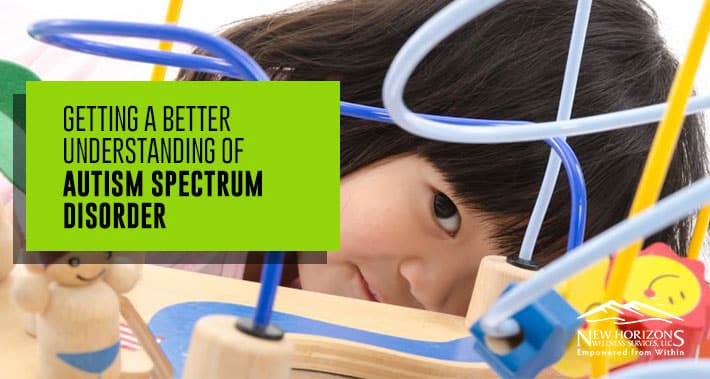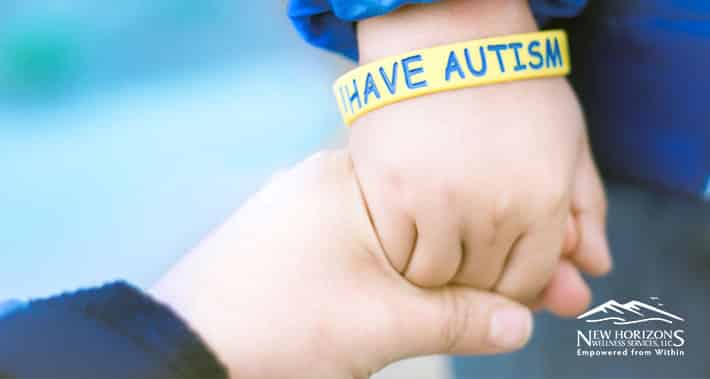
For parents of young children, getting a diagnosis of autism may be a scary thing.
What does this mean for your child’s development?
Will they be able to make friends with other kids?
How can you give your child the best chance to succeed with the challenges being “on the spectrum” will bring?
Today we’re going to have a closer look at what exactly autism is, and how interventions through occupational therapy for kids, speech therapy for kids, and social skills group exercises can help with your child’s development.
What Is Autism Spectrum Disorder?
Autism spectrum disorder is called a spectrum because autistic kids may have a wide range of symptoms, cognitive abilities, language skills and behaviors.
There are a number of neurodevelopmental disorders which now fall under the umbrella of “autism spectrum disorder” or ASD.
What all of these conditions have in common, though, is issues related to social interaction and communication.
The American Psychiatric Association’s Diagnostic and Statistical Manual of Mental Disorders, most recently released as the DSM-5 in 2013, is used by many organizations, individuals and government to diagnose psychiatric disorders such as autism.
Its predecessor, the DSM-IV-TR, included five Pervasive Developmental Disorders (PDDs):
- Autistic Disorder
- Asperger’s Disorder
- Rett’s Disorder
- Childhood Disintegrative Disorder
- Pervasive Developmental Disorder Not Otherwise Specified (PDD-NOS).
In the DSM-5, Autistic Disorder, Asperger’s Disorder and PDD-NOS are replaced by the diagnosis of Autism Spectrum Disorder.
Additionally, the DSM-5 also reduces social-related elements of autism into social communication impairment and repetitive/restricted behaviors, though the labels of Asperger’s and PDD-NOS are still in common use.
Individuals who fall on this spectrum generally have varying degrees of repetitive behavior patterns and a narrowed scope of activities and interests.
It’s not uncommon for people with ASD to also experience other conditions including anxiety and depression, attention deficit hyperactivity disorder (ADHD), and epilepsy.
Terminology: “Autistic,” “With Autism” and “Asperger’s”
People use different language when talking about autism.
Some prefer to say “a child with autism” because it emphasizes the child’s identity outside of their diagnosis.
This is commonly called “person-first” language and is often recommended as a respectful way to talk about disabilities and other health issues.
However, other people, including many autism activists, prefer to use the term “autistic.”
This is known as “identity-first” language.
Autistic self-advocates assert that being autistic is in fact part of who they are — just like other labels like Catholic, African-American, gifted, and so on.
They argue that saying “with autism” implies that autism is a negative thing that has happened to a person, rather than an integral part of their identity.
In this guide we use both “autistic” and “with autism” to acknowledge the diversity of opinions.
Some people also refer to their child having “Asperger’s disorder.”
That diagnosis is technically outdated, because in 2013 the Diagnostic and Statistical Manual of Mental Disorders (DSM-5) combined Asperger’s disorder into autism spectrum disorder.
However, many people do continue to use the term Asperger’s to describe autistic children who are typically without language or intellectual impairment, as do some who self-identify with the label Asperger’s disorder.
What Are The Symptoms Of Autism Spectrum Disorder?
Autism spectrum disorder (ASD) refers to a neurodevelopment disorder characterized by difficulties with social communication and social interaction and restricted and repetitive patterns in behaviors, interests, and activities.
Symptoms of autism spectrum disorder fall into two major categories, behavioral, and communication or social interactions.
In most cases, signs develop between one and two years of age, however, sometimes they show up before or after this period.
Here we will look at which signs to watch for in each category.

1. Behavioral Patterns
Repetitive and restrictive behavior patterns to watch for which could indicate autism spectrum disorder include:
- Becoming fixated on certain interests
- Strict adherence to routine, and distress when routine is varied
- Repetitive motions, movements, and speech
- Sensitivity to sensory input and surroundings, for example reactively negatively to a specific sound
2. Communication Problems
In addition to behavioral symptoms, there are also communication and social issues which can arise in individuals with autism spectrum disorders.
These can include:
- Difficulty sharing and recognizing emotions
- Problems with maintaining back-and-forth communication
- Difficulty maintaining eye contact
- Trouble inferring meaning of words when out of context
- Trouble sharing interests with others
- Issues reading or displaying body language and other non-verbal communication cues
- Having a hard time developing and maintaining relationships
- Not speaking, or having difficulty forming words
What Causes Autism Spectrum Disorder?
There is no one known cause of ASD.
Some factors have been identified which increase the risk, and these can include:
- Genetics, specifically having an immediate family member with autism
- Exposure to certain medications as a fetus, including valproic acid, and thalidomide
- Low birth weight
- Genetic mutations and genetic disorders such as fragile X syndrome
- Being pregnant while older than 35
- Metabolic imbalances
- Exposure to environmental toxins
- Having a history of viral infections
Often there is a combination of environmental and genetic factors at play.
It should be noted that, contrary to the beliefs of many, there is no evidence of a link between vaccines and autism.
What Treatments Are There For Autism Spectrum Disorder?
There is currently no known cure for autism.
In fact, many autism advocacy groups push back against the idea of finding a cure in the first place, claiming they like who they are and aren’t interested in changing that.
However, treatments can help to lessen symptoms and allow people to live in a way such that their autism doesn’t interfere with everyday life.
These interventions may reduce symptoms, improve cognitive ability and daily living skills, and maximize the ability of the child to function and participate in the community
The differences in how ASD affects each person means that people with ASD have unique strengths and challenges in social communication, behavior, and cognitive ability.
Therefore, treatment plans are usually multidisciplinary, may involve parent-mediated interventions, and target the child’s individual needs.
Let’s take a closer look at speech therapy, occupational therapy, and social skills.
1. Speech Therapy
One of the key signs of autism spectrum disorder is difficulty with communication.
Problems with communication – both verbal and non-verbal – can affect social interactions for individuals on the autism spectrum.
Speech therapy involves more than just helping a child learn to speak, it also involves developing skills such as holding a conversation, and reading non-verbal cues.
Tools used in speech-language pathology may include adaptive and augmentative communication (AAC) systems, electronic “talkers”, and picture boards,
Goals of speech therapy for autism spectrum disorder may include:
- Improving articulation
- Learning to communicate verbally and non-verbally
- Learning how to interpret others’ communication
- Learning how and when to communicate appropriately
2. Occupational Therapy
Occupational therapy assesses and supports success for an individual’s interactions with their environment.
They can help autistic individuals work towards goals related to social interaction, classroom performance and other aspects of behavior.
An occupational therapist will look at how well a child completes age-appropriate tasks, such as dressing themselves, and note factors such as:
- Skills needed for play
- Ease of transition between activities
- Attention span
- Response to stimuli
- Interactions with caregivers
- Aggression
- Motor skills
Based on observed information they can devise a program of treatment to help the child respond better to their environment.
The ultimate goal is to improve skills which can help improve quality of life and allow them to become independent.
Contact New Horizons Wellness Services
Do you suspect your child may be on the autism spectrum?
Or perhaps you’ve already had a diagnosis and need some assistance with speech or occupational therapy to assist in building skills your child will need to live independently.
New Horizons Wellness Services can help.
Our team includes qualified occupational therapists, psychologists and speech-language pathologists who will work with you and your child to reach your goals.
Contact us today to set up an appointment.
Yours in Health,
New Horizons Wellness Services13333 SW 68th Pkwy,
Tigard, OR 97223
- https://g.page/newhws
New Horizons Wellness Services provides a true multidisciplinary approach to mental & physical health treatments for children, adults and families.
